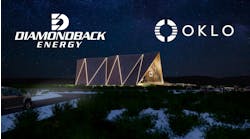John Dilliott, energy and utilities manager at the University of California, San Diego’s, says the university learned its lesson after the 2011 southern California blackouts — and turned to a microgrid for reliability at the research-heavy institution.
“The southern California region and especially San Diego is known as an energy cul-de-sac,” he said. “There’s a lot of imported power and not enough generation. A few things have happened over recent years that have made the area more vulnerable to power interruptions.”
That’s bad news to a campus that is home to a hospital and research-oriented buildings that suffer big time from a loss of power, he added. For example, UCSD has an electron microscope that takes six weeks to recalibrate every time the university loses power.
“The wake-up call was September 2011, when there was a blackout from Mexico to Orange County,” said Dilliott. “It showed us how important it was to keep the lights on. We wanted to make sure we could island from the utility.”
Fueling his fears was the shutdown of a big nuclear power plant, and wildfires that shut down power lines. “With the nuclear plant shutdown and higher wildfire rates, self-generating most of our power and being able to supply it to campus has become a priority,” he said.
The microgrid is primarily combined heat and power (CHP) from gas turbines, a fuel cell and some photovoltaic systems, plus battery storage, he said.
The 2.8-MW fuel cell, the biggest fuel cell on any college campus, generates about eight percent of UCSD’s total energy needs. It converts methane gas into electricity without combustion. The purified methane comes from the Point Loma Wastewater Treatment Plant.
In addition, UCSD generates 2.3 MW of rooftop solar. The 30 MW natural-gas fired CHP system meets 85 percent of the campus’s electricity needs annually and saves $8 million a year in energy costs.
At night, water chillers fill a 4-million-gallon storage tank with cold water. The water is then used during the warmest time of day to cool campus buildings.
In addition to being mostly energy independent, UCSD benefits from the microgrid by storing energy at night and shifting demand away from the utility’s peak usage times.
“The utility charges us a peak demand rate every month based on our highest usage during the peak of the day. We have 50,000 people who all come during the day, and our highest loads are during the utility’s peak hours,” said Dilliott. “The peak number is close to $8/kW-month,” he said.
The project cost about $5.5 million, and the state provided $3.2 million in incentives, he said.
UCSD’s microgrid is a classic example of all the benefits a microgrid can reap. It helps the university avoid high peak rates, keeps the lights on when the grid is down, avoids research downtime associated with power losses, and is partially fueled by renewable energy. Do you know of any similar stories about the benefits of microgrids? Please share them!







